Anzac Day brings with it a fever pitch of publishing of war books for both children and adults. This has been especially true during the centenary commemorations of World War I. People are horrified by war, but also fascinated, and it is important for everybody to know some history: to understand what has happened, what is happening, and why. So we can find a solution.
As Melinda Szymanik noted in her recent article, ‘War! What Is It Read For?‘: ‘War books are an opportunity to generate an understanding of what war does to countries, communities, families and individuals.’ The list below is based on one Melinda submitted with her piece about war books for children, with a few additions. We hope you find something that you think might work for your family, for the next time you get asked why there are wars.
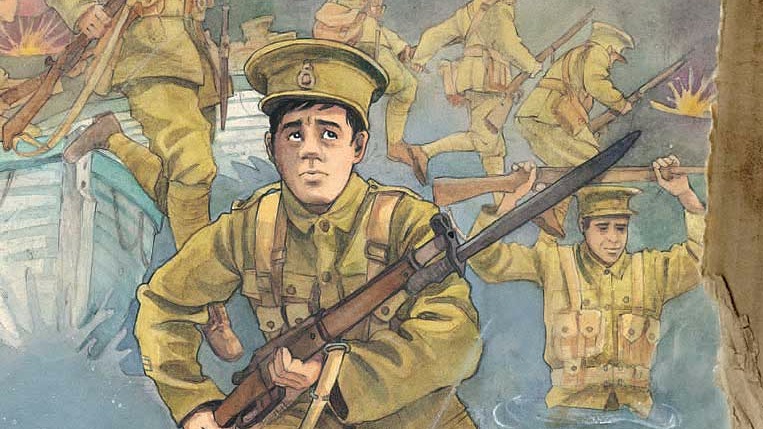
Picture books

The Anzac Puppy by Peter Millett, illustrated by Trish Bowles (Scholastic, 2014)‘This delightful picture book will engage children and adults alike; beautifully illustrated and with just the right amount of detail for a younger audience, it is a timely publication as the 100th anniversary of the beginning of World War I approaches.’
Rachel Moore, The Reader (age 6+)
The Harmonica by Dawn McMillan, illustrated by Andrew Burdan (Scholastic, 2016)‘The Harmonica will be a welcome addition to school resources, linking history to current day for ANZAC learning. Dawn and Andrew have created a moving modern day ANZAC story which gently reminds us all that our service men and women continue to do their duty and serve our country. And that not all of them come home.’
Vanessa Hatley-Owen, The Reader (age 4+)
Best Mates: Three lads who went to war together by Philippa Werry and Bob Kerr‘Harry, Joe, and the narrator are best mates who grow up together, and fight at Gallipoli together. The book shows the experience through the eyes of someone naïve and excited for an adventure, who ends up in the middle of a devastating war.’
JJ McConachie, NZ Booklovers (age 7+)
Torty and the Soldier by Jennifer Beck, illustrated by Fifi Colston (Scholastic, 2017)‘Torty’s target audience bask in illustrations the way their parents and grandparents bask in a wall of paintings at The Tate, The Met, Te Papa – if Te Papa still has paintings? They pore, point, peer, pat. Anyone who still believes reading or being read to is a passive activity has never really watched a kid with a picture book.’
David Hill, The Sapling (age 5+)
Roly, The Anzac Donkey by Glyn Harper, illustrated by Jenny Cooper (Puffin, 2015)‘Told from the donkey’s perspective, which will definitely appeal to younger readers out there, the true face of war is delicately exposed to the reader. It’s not a gore fest, it’s true facts shaped to help young minds understand the lengths people went to in order for them to be able to enjoy the freedoms they have today.’
Drew Thompson, NZ Booklovers (age 6+)
Jim’s Letters by Glyn Harper, illustrated by Jenny Cooper (Puffin, 2014)‘This is not a book to read to 5-year-olds, but for children who are in middle primary or older. It is a beautifully told heart-breaker, and timely as we commemorate the 100th anniversary of the Gallipoli landings and then the battles in Europe and beyond.’
Rachel Moore, The Reader (age 7+)
Junior fiction

Flight Path by David Hill (Puffin, 2017)
‘The dogfights and descriptions of the bombing raids are superb and after each mission a white bomb is painted on the nose of the Lancaster. However with each mission the tensions get higher. When will it be F Fox’s turn to be shot down or suffer casualties?’
Bob Docherty, Bob’s Books (age 10+)
Enemy Camp by David Hill (Puffin, 2015)
‘David Hill captures the honesty of the age group and the sense of curiosity which grips lads of Ewan’s age. This book would be an excellent read-aloud to a class, or a family. It will also capture the interest of those hard-to-find-a-book-for boys.’
Kathy Watson, The Reader (Age 10+)
A Nice Day for a War by Matt Elliott and Chris Slane (HarperCollins, 2011)
‘Not a picture book, not a graphic novel, not anything easily pigeon-holed, Chris Slane and Matt Elliott’s study-cum-evocation of life in World War I is a great resource and a great read.’
David Larsen, NZ Herald (age 10+)
A Winter’s Day in 1939 by Melinda Szymanik (Scholastic NZ, 2014)
‘The book highlights the psychological and physical impacts that World War Two had on civilians who were deemed to be in the way. Being transplanted from your homeland and having your property and all you own removed from you was only the beginning.‘
Sarah Forster, The Reader (age 10+)
YA novels
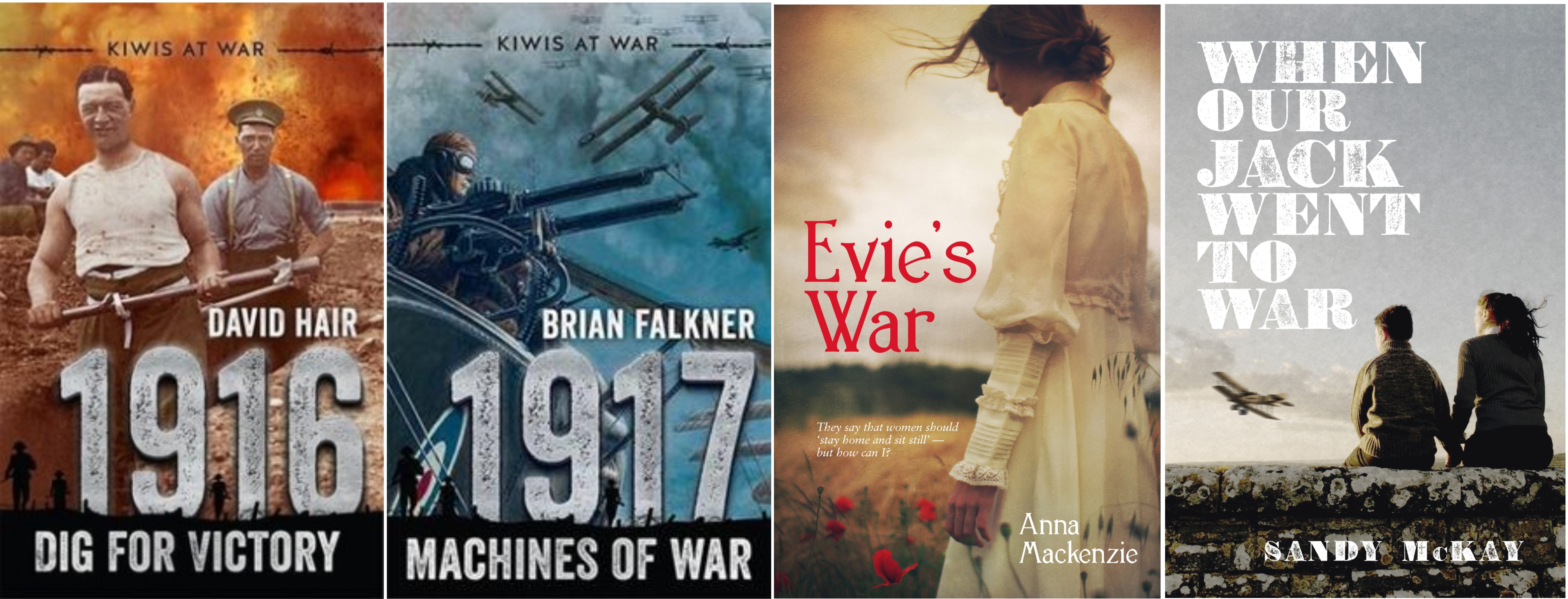
1916: Dig for Victory by David Hair (Scholastic, 2016)
‘Hair’s descriptive writing fleshes out the visceral reactions to danger and death, and the ways in which soldiers worked to maintain hope and sanity in times of conflict.’
Azariah Alfante, The Reader (age 13+)
1917: Machines of War by Brian Falkner (Scholastic, 2017)
‘The highlights of this superbly told story are the airborne dogfights and the parties around the piano in the evening as the pilots mourned those that never came back and toasted victories.’
Bob Docherty, Bob’s Books (age 13+)
Evie’s War by Anna Mackenzie (Longacre, 2015)
‘Told in diary format, Evie’s War sets out to provide a voice for the stories less frequently told. It tells of families and communities in both England and New Zealand, of women at home and at the Front, of children too young to serve but not to see, of the survivors and the scarred.’
Rebekah Fraser, NZ Booklovers (age 13+)
When Our Jack Went to War by Sandy McKay (Longacre, 2013)
‘A powerful novel told in letters from 18 year old Jack to his younger brother Tom from the battlefields of France and Belgium during World War 1. Sandy McKay has shown the contrasting situations of the men in the trenches and how the war was portrayed by the political leaders and the press at the time.’
Bob Doherty, Bob’s Books (age 13+)
Non-fiction
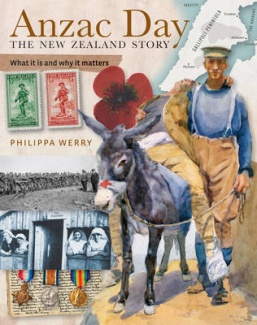
Anzac Day: The New Zealand Story by Philippa Werry (New Holland, 2013)
‘In ‘Anzac Day’, author Philippa Werry brings historic and contemporary information together, providing plenty of material for teachers and parents to explain the history of our nation to our young people and have them fully understand the contemporary commemorations of war.’
Ministry of Culture and Heritage (age 8+)
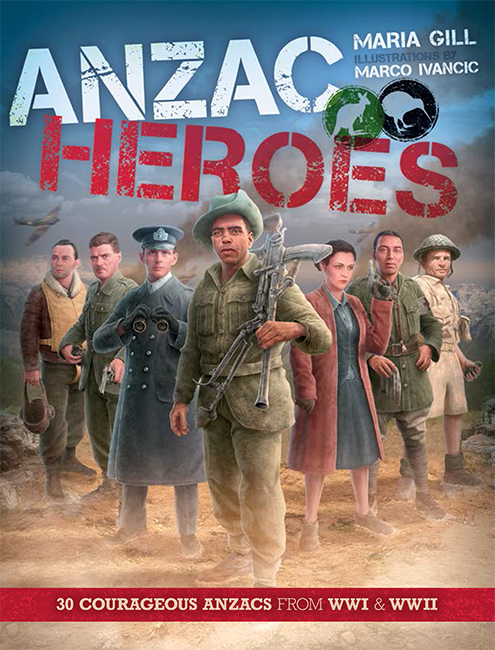
Anzac Heroes by Maria Gill, illustrated by Marco Ivancic (Scholastic, 2016)
‘The book brings to life the people who risked everything, left everything and lost everything as they participated in World Wars I and II. There’s carefully chosen material, never overwhelming the reader, but not skimping on detail either.’
Stuff.co.nz (age 8+)
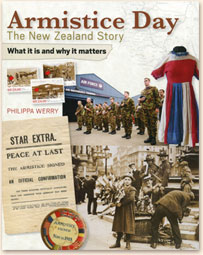
Armistice Day: The New Zealand Story by Philippa Werry (New Holland, 2016)
‘This book looks at the ends of wars: what happened, how they were later remembered and the aftermath of war both abroad but especially in New Zealand. It also looks at our place both in the United Nations and in peacekeeping operations.’
Kathy Watson, The Reader (age 8+)
Books featuring pacifism
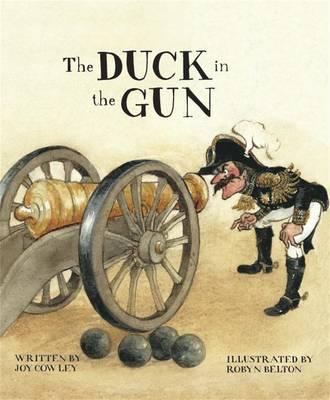
The Duck in the Gun by Joy Cowley, illustrated by Robyn Belton (originally published 1969)
‘This is a very funny, anti-war book, with great fluffy illustrations perfectly capturing the characters, particularly the General, who begins the book wanting to go to war with the town, but because of one nesting duck, comes to see the town in a very different light.’ Renee Konig, ABC (Age 4+)
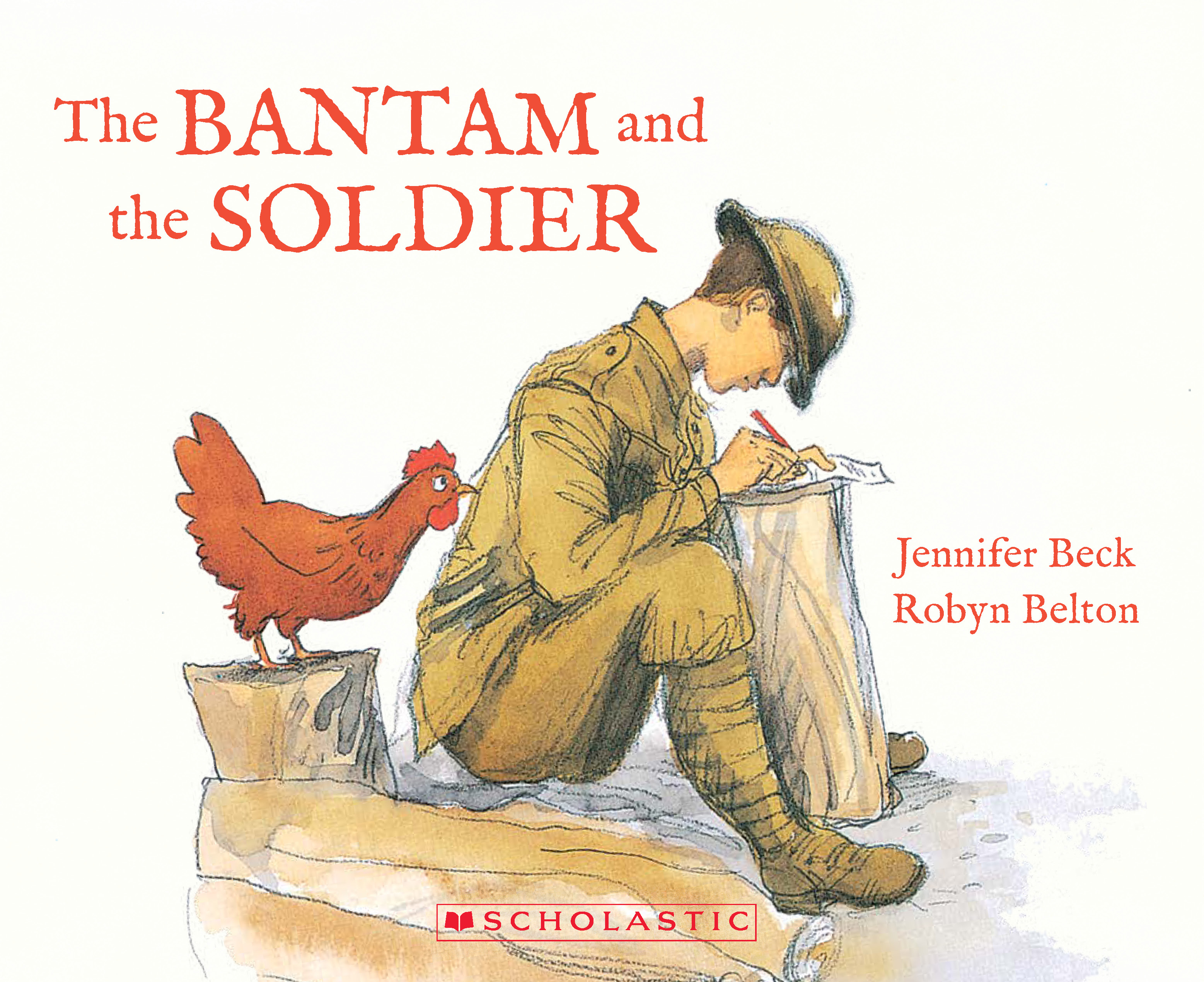
The Bantam and the Soldier by Jennifer Beck, illustrated by Robyn Belton (originally published 1996)
‘Among a number of fine New Zealand stories about the First World War, The Bantam and the Soldier stands out because of its superb illustrations. The picture book for older readers is a growing genre in children’s literature, and is an excellent development. Pictures, especially about an historical setting, often convey so much more than words.’
Susan Price, Children’s War Books (Age 7+)
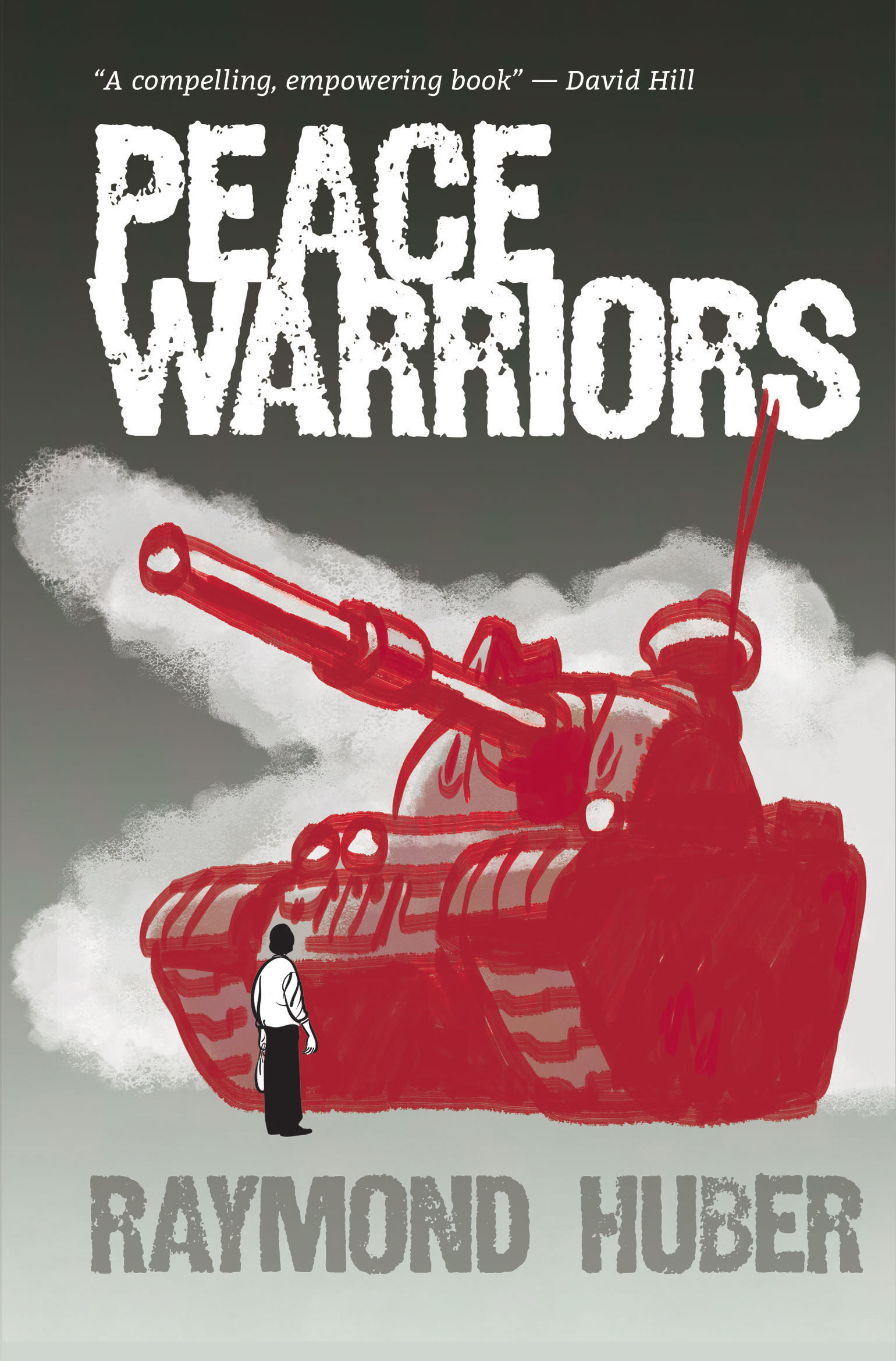
Peace Warriors by Raymond Huber (Makaro Press, 2015)
‘Peace Warriors tells the dramatic stories of people who chose non-violent resistance in times of conflict—stories of young men and women from New Zealand and around the world. Young readers will discover that peaceful resistance can be as effective as military force, and that people-power can change history.’
Zac McCallum, My Best Friends are Books (Age 7+)
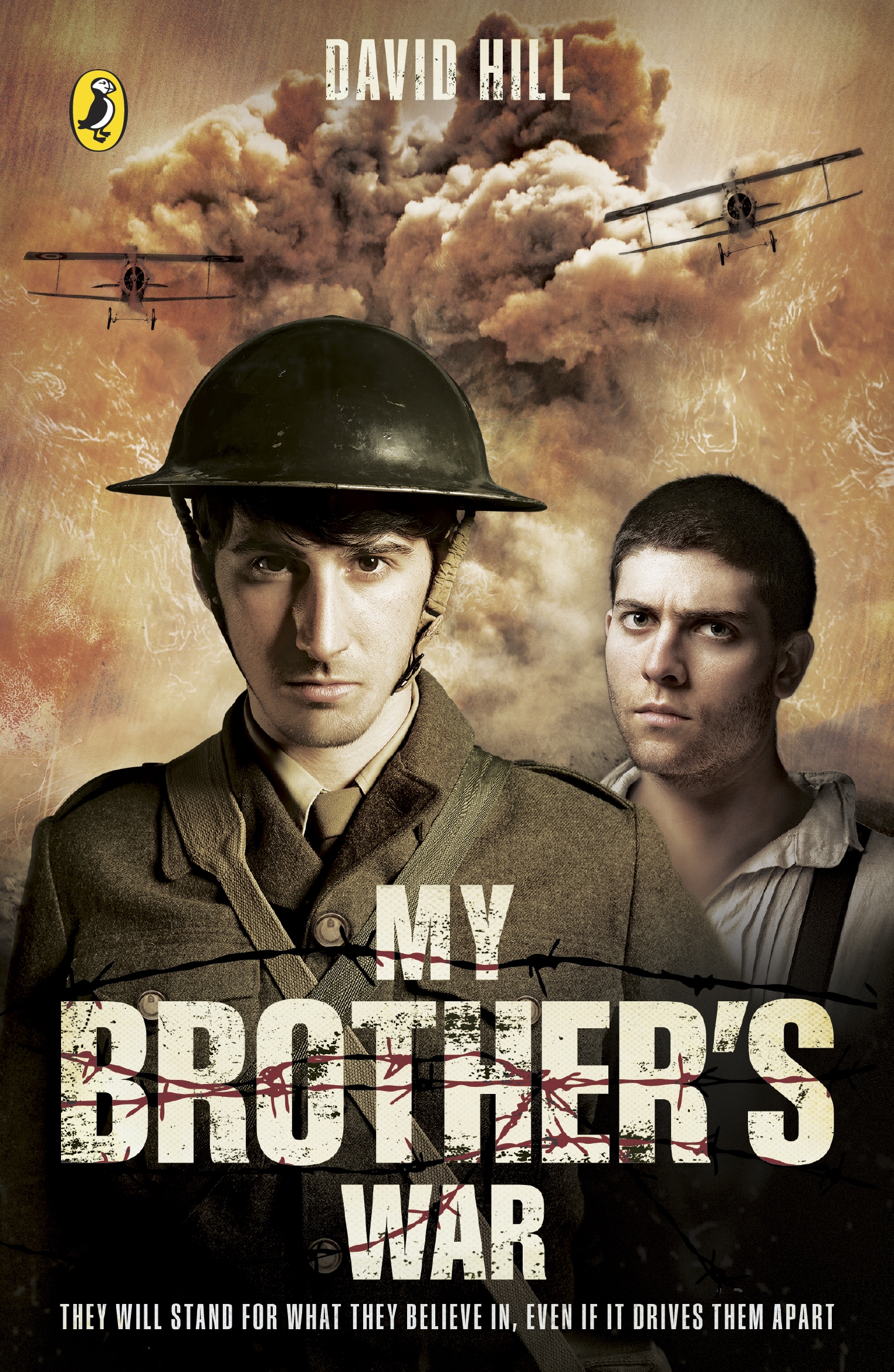
My Brother’s War by David Hill (Penguin Random House)
‘William’s excitement at being off on a great adventure quickly pales when faced with the horrors and realities of war. Edmund’s passionate refusal to follow military orders and be part of a killing machine waivers in the face of the suffering and heroism he witnesses in the trenches.’
Tiffany Matsis, The Reader (age 12+)

Sarah Forster has worked in the New Zealand book industry for 15 years, in roles promoting Aotearoa’s best authors and books. She has a Diploma in Publishing from Whitireia Polytechnic, and a BA (Hons) in History and Philosophy from the University of Otago. She was born in Winton, grew up in Westport, and lives in Wellington. She was a judge of the New Zealand Book Awards for Children and Young Adults in 2017. Her day job is as a Senior Communications Advisor—Content for Te Herenga Waka—Victoria University of Wellington.



